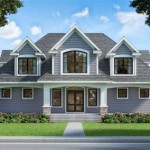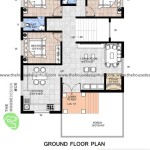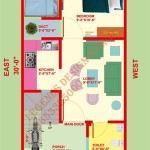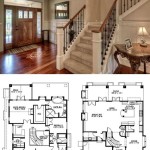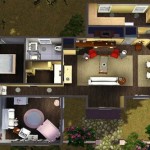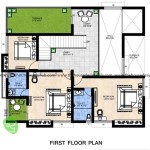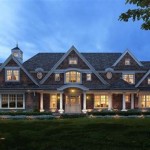Essential Aspects of Hill House Plans New Zealand
In the picturesque landscapes of New Zealand, the demand for hill house plans is steadily rising. These homes are meticulously designed to harmoniously blend with their elevated surroundings, offering breathtaking views and unique challenges. Understanding the key aspects of hill house plans can empower you with the knowledge to create a stunning abode that meets your specific needs and complements the natural beauty of the terrain.
1. Site Analysis and Orientation
The first step in designing a hill house plan is a site analysis. This involves carefully evaluating the slope, contours, and orientation of the land. The position of the house should optimize sunlight, minimize wind exposure, and maximize the panoramic views. Pay attention to the drainage patterns and ensure proper drainage solutions are incorporated into the plan to prevent erosion and water damage.
2. Structural Considerations
Building on a slope requires special structural considerations. The foundation must be designed to withstand the forces exerted by the soil and the weight of the building. Retaining walls may be necessary to stabilize the slope and prevent soil erosion. Steel framing or reinforced concrete are often used in hill house plans to provide additional strength and durability.
3. Access and Driveway Design
Access to a hill house can present challenges. Driveways should be carefully planned to provide safe and convenient access to the property. The slope of the driveway should be moderate, and switchbacks or ramps may be necessary to navigate steep sections. Consider incorporating gravel, pavers, or other materials that offer traction during inclement weather.
4. Floor Plan Layout
The floor plan of a hill house should flow seamlessly with the slope of the land. Split-level or multi-level designs can accommodate changes in elevation and create unique spaces with different views. Open floor plans allow for natural light and panoramic vistas, while defined zones ensure privacy and functionality.
5. Exterior Materials and Finishes
The choice of exterior materials and finishes for a hill house should complement the surroundings. Natural materials such as stone, wood, or brick create a harmonious blend with the landscape. Durable materials that can withstand the elements, such as fiber cement or metal cladding, are also excellent options. Consider the use of large windows and sliding doors to connect the interior with the outdoors.
6. Decks and Outdoor Spaces
Decks and outdoor spaces are essential elements of hill house plans. They provide an extension of the living area and offer stunning views of the surroundings. Multi-level decks or terraces can create different seating areas and maximize the use of the outdoor space. Incorporate railings and other safety features to ensure a safe and enjoyable outdoor experience.
7. Sustainability and Energy Efficiency
Sustainability is becoming increasingly important in hill house plans. Consider incorporating energy-efficient features such as passive solar design, thermal insulation, and double-glazed windows. Utilize natural ventilation and cross-breezes to minimize the need for artificial cooling. By embracing sustainability, you can reduce your environmental impact and create a comfortable and energy-efficient home.
8. Architectural Style and Character
The architectural style of a hill house can vary widely. From modern minimalist designs to traditional craftsman homes, the choice depends on your personal preferences and the surrounding environment. Consider the roofline, exterior details, and finishes that complement the natural beauty of the hillside. A cohesive design will enhance the aesthetic appeal and create a harmonious connection with the landscape.
9. Landscaping and Hardscaping
Landscaping and hardscaping play a vital role in completing the look and functionality of a hill house. Retaining walls, terraces, and pathways can be used to create visual interest and define outdoor spaces. Choose plants that are native to the area and require minimal maintenance. Incorporate water features, such as ponds or fountains, to add tranquility and enhance the natural beauty of the surroundings.
10. Professional Design and Engineering
Designing and building a hill house requires专业 knowledge and expertise. Engage the services of an experienced architect and engineer who specializes in hill house plans. They will guide you through the design process, ensuring that your home is structurally sound, energy-efficient, and complies with building codes. Their professional insights and attention to detail will ensure a successful and satisfying building experience.

This Small House Sits On A Hillside In New Zealand

This Hillside Home In New Zealand Was Designed To Capture The Amazing Ocean Views

Hillside Cottage Plan In New Zealand Embraces Serenity And Sustaility

353m2 Or 3880 Sq Foot 4 Bedrooms Home Plan Bed Bedroom Plus Rumpus Plans Pole Hillside House New Zealand

Bvn Donovan Hill Places Mann House In New Zealand Landscape

Oak Hill Ii House Plan 1488 Square Feet New Zealand

This Hillside Home In New Zealand Was Designed To Capture The Amazing Ocean Views House Slope Modern Plans

Hill Builds Building Homes On Steep Uneven Terrain

New Zealand House On A Hill Stilts Urban Design Architecture Houses Prefab Homes

2024 New Zealand Architecture Awards Shortlist Architectureau

